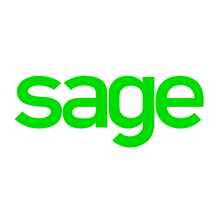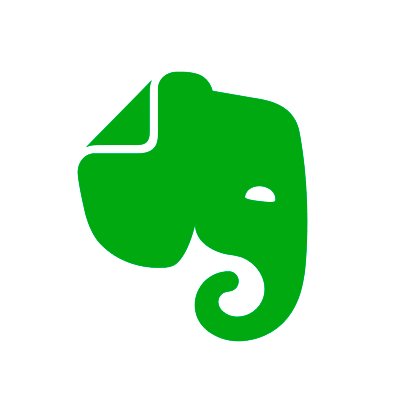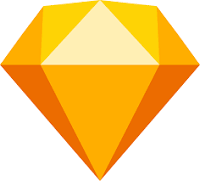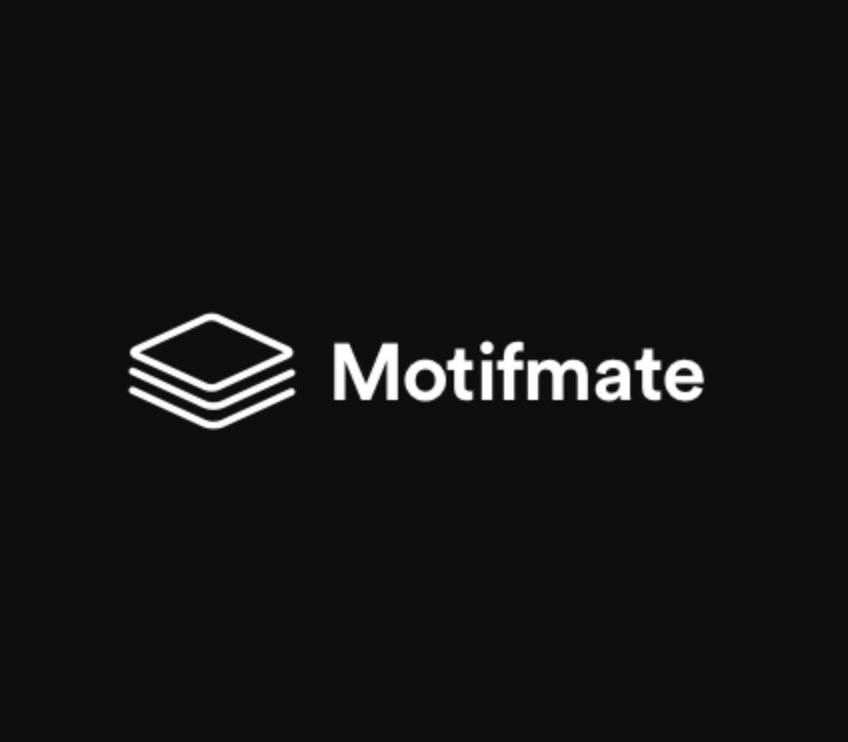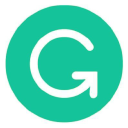
Creating a Journal to Help Men Around the World
Hello! Who are you and what are you working on?
Hey! My name is Ollie and I’m the co-founder of MindJournal – a journaling brand for guys.
MindJournal is a groundbreaking journal to help you navigate the challenges of everyday life. It’s more than just a book — it’s your secret tool to help build a more resilient you. Using 30 powerful questions, based on scientific research — MindJournal will help you feel calmer and more motivated than ever to handle anything that life throws at you.
At the moment I’m working on designing the 3rd edition of our core journal that’s helped over 3,000 guys from all over the world. We’ve helped guys at rock bottom, to entrepreneurs at the top of their game all achieve one thing — feel more in control of their emotions and significantly improve their life satisfaction and self-worth.
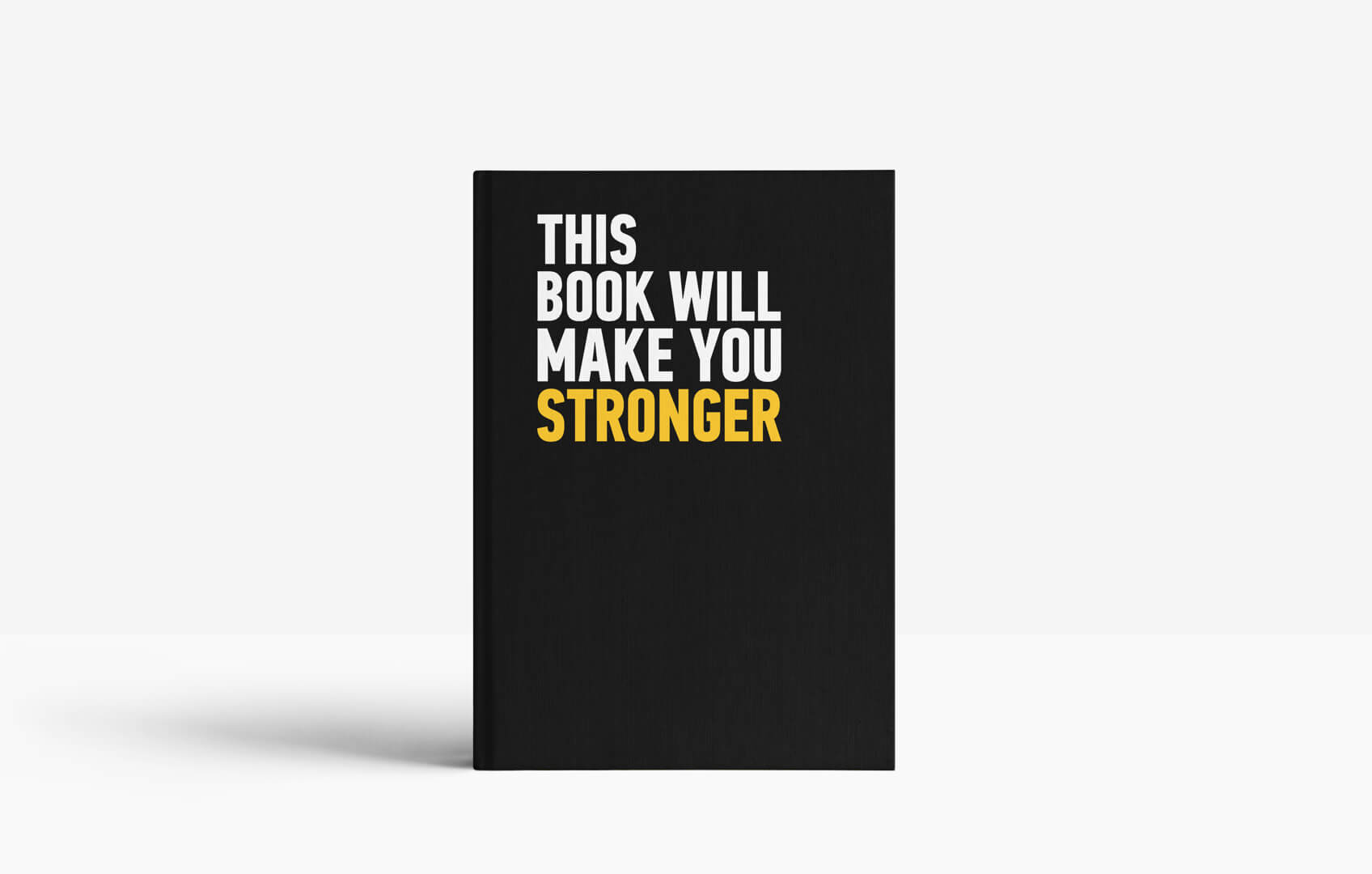
What's your backstory and how did you come up with the idea?
I’ve personally kept a journal for 10 years now, ever since I first went into therapy to recover from PTSD. My mum took her own life 2 years prior to my breakdown, and I never really got to grips with my emotions or how to process everything that had ever happened.
When I started therapy I was still stuck in the mindset that talking about how I felt was not something I should do. So talking therapy was the most unnatural experience for me. So to help, my therapist recommended I tried journaling – as a way of privately thinking about how I felt and what was on my mind. It was a game-changer of a moment for me.
My mum took her own life 2 years prior to my breakdown, and I never really got to grips with my emotions or how to process everything that had ever happened.
Writing was like turning on a tap in my mind and body that helped me to release everything. The most powerful thing in all of this, was a list of emotions my therapist gave me – this list acted as a way to help me kick-off my journaling sessions, as I would ask myself ‘what am I feeling?’. And then I’d go from there.
Years later, after recommending journaling to a friend – I had the lightbulb moment. He complained that he tried journaling but that he didn’t really know what to write or how to really use it. So being a designer, I knew that this was a problem I knew I could solve. And from that point, MindJournal was born.
Describe the process of creating and launching the initial product.
We knew the success of MindJournal would come down to how good it looked as well as how well it worked. It had to be simple, and require minimal input from the user – so they could get on and journal. So we began by compiling a writing framework that would actively help people to kickstart their writing sessions.
I knew from personal experience that a feeling list was going to be a crucial component of the framework, but also the right prompts in the right order. After tons of research and testing, we settled on a core set of 30 questions/tasks that would help users to journal their way to happier, healthier and emotionally stronger version of themselves. This work was also vetted by psychology professor Karen Pine, whose work in behavioral change, has helped mold MindJournal into a solid and thoroughly considered tool.
But after working in design for 10 years, and helping multiple businesses to launch their brands – we know it doesn’t matter how good something looks if no one knows about it.
While we were working on the core content of the journal, we were also working with a packaging designer to nail the aesthetic side of the journal. We knew that the paper needed to perform well with a multitude of different pens and that the cover needed to be strong and durable enough to withstand everyday use. We also wanted the journal to be private and discreet so we designed a bespoke wrap-around case that was fastened with industrial grade rubber bands.
The final finish was something elegant, simple and felt incredible to hold in your hands.
But after working in design for 10 years, and helping multiple businesses to launch their brands – we know it doesn’t matter how good something looks if no one knows about it.
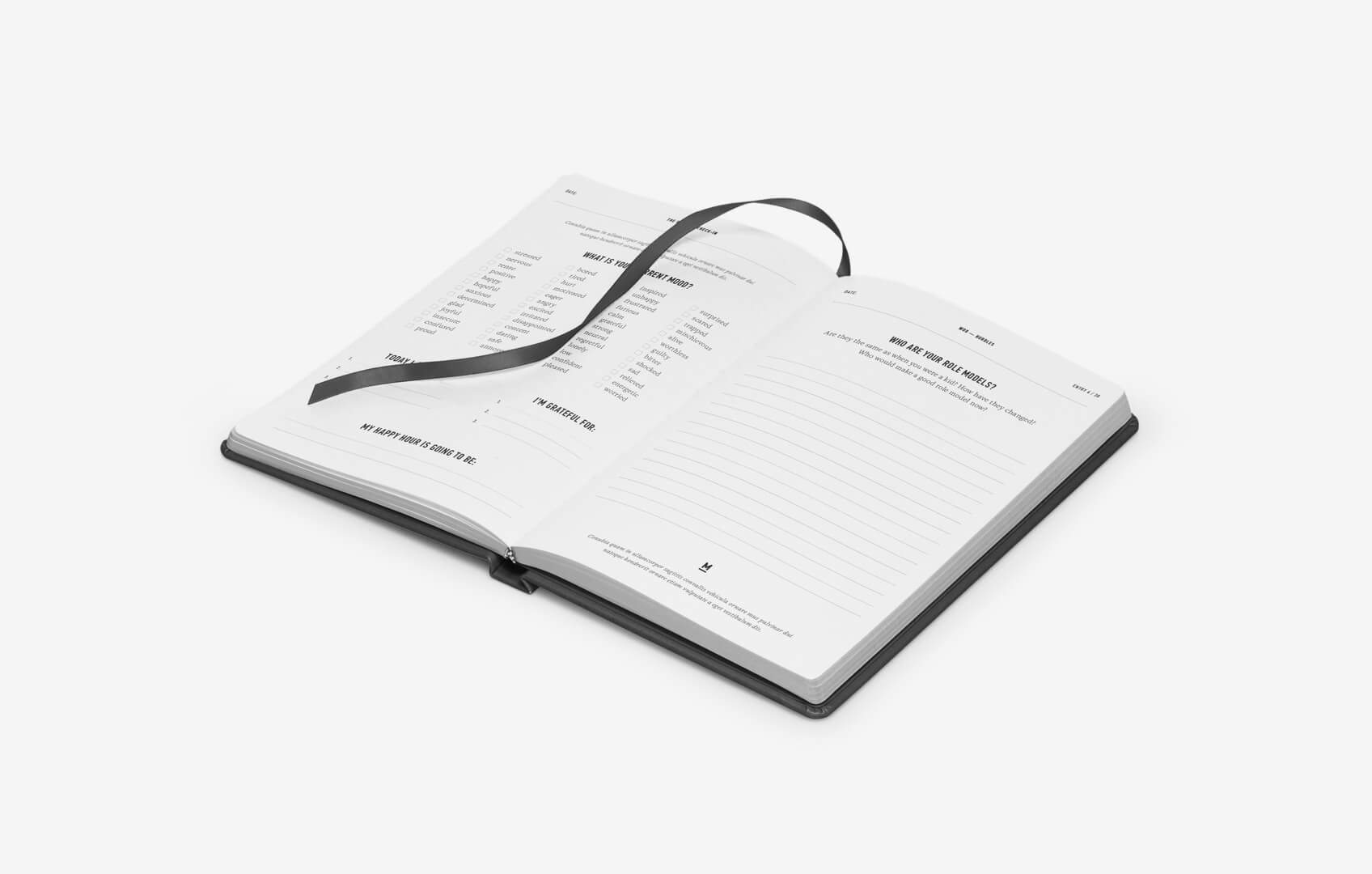
We knew that the brand would help differentiate us from all the other journaling brands out there. And this would all come down to how we marketed the product.
It’s worth mentioning at this point that product design, manufacturing, branding, and marketing were all being discussed and explored at the same time. There was no A, B, and C process. The work we did in one area directly affected another area, and therefore we were constantly redesigning and refining everything as we progressed.
Our process of sourcing a reliable manufacturer literally took months. Not just because of our high demands for perfection but it was just hard to find custom journal makers. In the end, we found this incredible freelance packaging designer, based in the same city as us. Together we prototyped multiple custom cases and paper types to create a journal that looked and felt like nothing else.
The biggest moment came to when we were planning the marketing of Kickstarter campaign. We needed to nail our brand voice and for this, we needed to know who we were really talking to. So we asked ourselves, ‘who did we feel most comfortable talking to?’. And the answer was guys.
As soon as we made this realization it changed everything. From the brand, to the writing framework, the packaging, and the marketing. This became our USP and would help us smash our Kickstarter goal and secure a book deal with one of the biggest publishers on the planet.
Being so focused purely on one single audience has allowed us to laser focus our entire business. Rather than try and communicate and create a brand for everyone, we have a very key demographic — and that’s any guy that wants to change or improve their life. Even though we’re a niche, it’s a pretty big niche to be in. The fact is, by picking an area that we know one else is in (competitor wise) — we can own that space — which reduces our time and costs on reaching that audience.
But while being the only brand in your specific niche/USP, means you have to learn and adapt as you go. Because no one has done it before you. With MindJournal, we’re creating a completely new marketplace that doesn’t exist — journals specifically for men, that talk about guy issues. To do this requires bravery, patience and being OK with being honest about your own vulnerabilities as a brand.
We’re always honest with our audience that we’re still learning as we go. That we don’t have all the answers. And this itself becomes another USP for our brand and our mission.
What have you done to grow the business to where it is today?
The biggest things for us have always been to tell our story.
Our story relates to so many guys, that we’ve been fortunate to have received some pretty major press coverage. And that’s helped with every aspect of our business growth. We’ve been reviewed by Uncrate, LadBible and The Guardian.
This press coverage blew up our Kickstarter campaign that we used to crowdfund our initial launch. We never knew it would go as well as it did, although we always planned for success. Our objective with our Kickstarter was to keep it simple, be honest and tell our story. No clever rewards or complicated explanation — just do one thing really well. That’s always been another key objective, it’s why we only have one product instead of fifty!
I could write an entire post about how we nailed our Kickstarter but my three golden rules would be:
Don’t rush it. We planned and developed our Kickstarter over 6 months before we launched the campaign. You only get 1 shot so you better nail it.
Aim to get funded in the first 3 days. And to do this you want as much traffic and coverage on day 1. Go big or go home. Plan everything for day 1. Kickstarter is about causing an explosion, not a drip and a splash.
Spend money on a high-quality film and product photography. Our entire Kickstarter campaign cost us roughly £4k. Money well worth investing.
However, since the Kickstarter, we’ve found that you can only tell the same story so many times. And while it was good for that initial launch, it doesn’t hold much weight for recurring monthly marketing.
We’ve found our newsletter to be our most engaging area to both grow our audience and market our product. But we don’t overdo it. Our subscribers are human beings and we care about them – so we provide them with support and guidance as well as updates on new products and offers.
We use Privy to capture emails on our site because it just works. We’ve found that giving content away works better than discounts or shipping deals. But that’s because we’re a content focused brand — guys buy the journal for what’s inside it, not just because it looks cool. We use MailChimp to then trigger a nicely designed welcome email with a link to download the ‘Free eBook’.
And when we do want our subscribers to buy, we try and not make it the sole purpose of the email. We provide them with additional content or links to other products that we don’t even stock - just to show them that we care.
A golden resource of perfect email marketing can be found by reading a book by David Hieatt: Do Open (in fact his other book: Do Purpose is also a book that has helped sculpt our brand).
The budget for paid advertising has never really been there for us. Retargeted Facebook ads were super successful in both our Kickstarter and book launch – and for any launch, we’d always run these.
Social media has always been tricky as our brand content is not that shareable – journaling is by nature a private thing to do and most guys want to keep it that way. The last thing they’re going to do is share it on social media. Some have though - but most just email us directly to share how much the Journal has changed their life – and it’s these messages that help keep the lights on!
If you could go back, would you do anything differently?
Wow, tricky question. Well, we don’t believe in regrets so it’s hard to think of anything but if I had to pick one thing it would be... to have been better at the financials on the 1st edition.
We could have helped more guys had we reduced the production costs a little. We found the best for everything – best paper, best board for the case, best rubber bands, etc. All of this had an impact on our margins and in the end, we barely broke-even on the 1st edition.
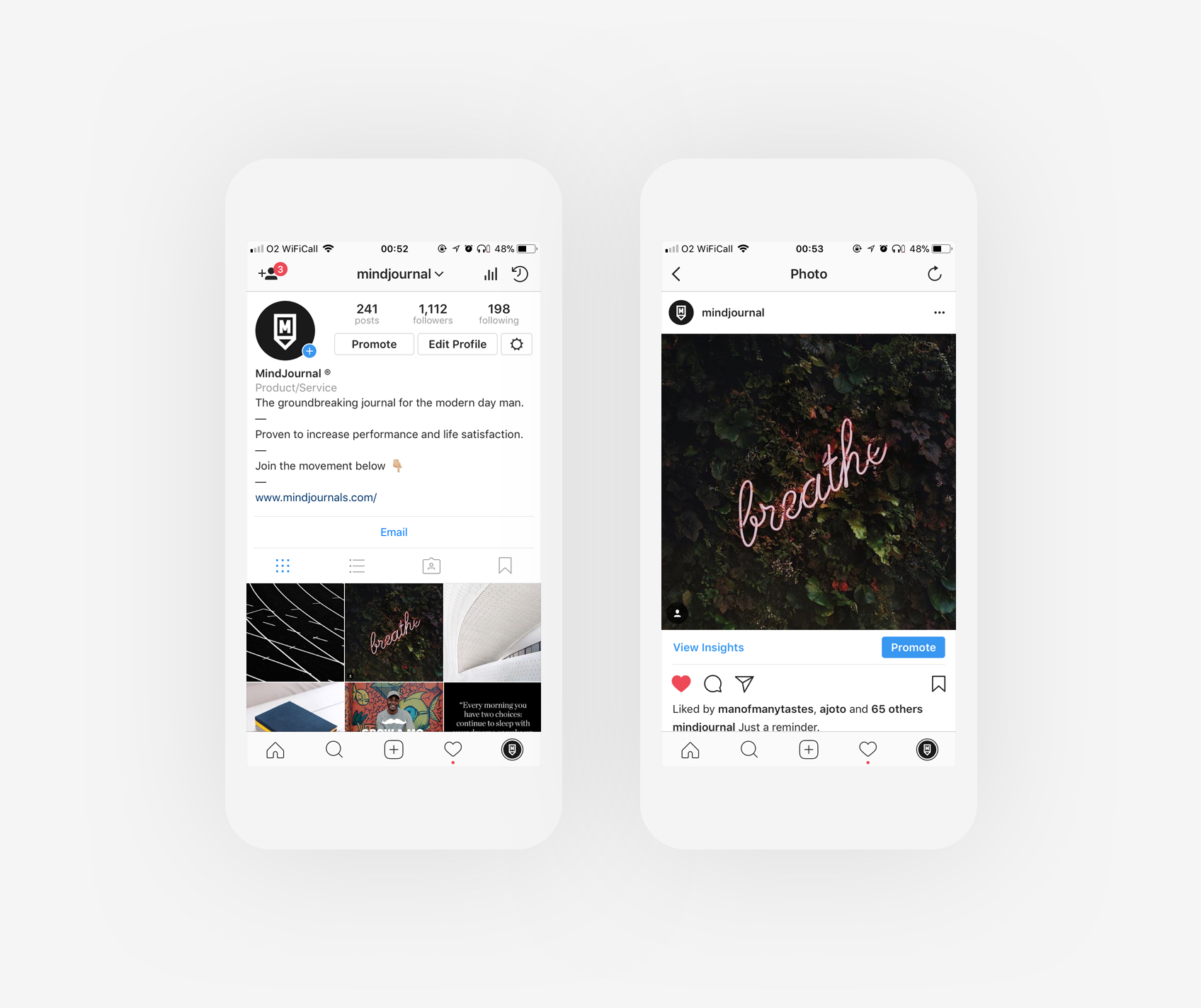
However, it’s hard to see that as a set back as the excellence of it is one of the things that made it stand out. One thing to say is that we’re always learning and evolving as a brand – we’re treading new ground.
There’s no other journal brand out there for guys, not even really any men’s self-help brands that isn’t a nutrition or fitness brand. So we’re constantly observing and listening and doing our best to make the best possible product and help as many guys as we can.
Where you are at now and what are your plans for the future?
Right now we’re hard at work on Edition 3 of MindJournal. We’ve learned a lot from both our Kickstarter version and the workbook version we launched with Penguin so this 3rd version is the result of almost two years worth of further research and testing.
We’re also redefining the brand and becoming more open and gender neutral. We’ve learned that the term ‘man’ can be interpreted differently in all kinds of countries and cultures. We’ve always wanted to talk to all guys – no matter their background, or how they see themselves. We want to be a male-neutral brand and accessible to all.
Don’t make something for everyone as you’ll end making something for no one. It’s OK to be a niche.
On top of all this, we’re working hard to make MindJournal a profitable business so we can invest a percentage of sales into other organizations that are going amazing things to support men’s health.
MindJournal has been side-business / side-project, requiring a lot of personal time and funding. The mission now is to get MindJournal standing on its own two feet financially, so we can focus more time and energy on growing it as a business and hitting our ultimate goal – helping one million guys to actively keep a journal.
What platform/tools do you use for your business?
Website
Squarespace is for our Amazon affiliate link for our published version. Although as soon as edition 3 is ready we’ll be switching to a full e-commerce solution. We’re currently designing and building a Shopify store, ready for the launch.
Newsletters
We use MailChimp for our newsletters, however, we’re going to be switching this to Drip.com and CampaignMonitor as it handles user journeys better and signups are easier. For pop-ups and offers, we use Privy.
Abobe Creative Suite
This is our core design software that we design all of our products in.
Social Media
We use UNUM for scheduling Instagram posts as it allows us to design our grid. And we use Crowdfire for scheduling other posts.
Advertising
We plan to use AdEspresso for paid advertising as we’ve heard some great things about it and we’re complete novices when it comes to PPC.
Productivity
Slack for team messaging, although we sit next to each other - it’s more for suppliers. Newton for emails because it rocks and I hate Apple Mail. Todoist for lists and tasks. Asana for project management. Dropbox for all our files. Evernote for all notes and research and writing. Grammarly for editing blog posts and newsletters (I’m terrible at spelling so everything gets checked in there, even this interview!). Spotify because without music there’s no point. Headspace when I need to take 10 minutes to destress or feel less anxious about something.
Code/Development
I’m building the Shopify store using Atom and Motifmate. Motifmate allows me to download the theme to my laptop and work on the code offline and then publish it when I’m happy. I can test everything locally rather than working in the HTML/CSS editor within Shopify.
Physical tools
Always A3 sketch pad for brainstorming ideas. Pentel Sign pens for sketching and drawing ideas. AJOTO pen for note taking in meetings. CIAK notebook for everyday notes. BOSE Q35 headphones when I need some Headspace time.
Press
Reply for outbound mass email. Norbet/Find That Email/RocketReach for finding editors/journalists email addresses.
What’s the most influential books/podcasts/websites for your business and why?
Anything by Tim Ferriss. His book The 4-Hour Work Week is what inspired me to build a business like MindJournal.
I’ve been working as designer for 10 years, building other people's dreams and his book inspired to build my own dream. It is by far the most inspiring book I’ve ever read. And not even if you want to build a business. It’s packed full of tips and advice on how to be more productive so you can get more done and get away from your desk and do the things you love.
Advice for other entrepreneurs who want to get started or are just starting out?
I’m going to do this bullet point style as I’ve got so much!
Don’t make something for everyone as you’ll end making something for no one. It’s OK to be a niche. Niche is easier to market than mass. And a niche can become a mass when everyone jumps in your pool rather than you trying to make a splash in someone else's.
Keep it simple. If you can’t explain it in 10 words or less, then it’s too complicated.
Design is important, don’t try and save money and do it yourself (unless you’re a designer) – you get what you pay for with design.
Shop around, get at least 3 quotes and go with your gut. Designers work best with smiles, not frowns.
Read The 4-Hour Work Week before you start (and read it all).
Do it because you love it not because you think you should.
It’s OK to be financially motivated, but you should have a primary source of income too because the money might not come right away.
Make a set of rules that you and your team must stick to and never compromise on. These are essentially your brand values, but bigger and more important.
Only you can break the rules.
Only take investment if the investor doesn’t break the rules. This is the most important one of all – enjoy it and don’t take it too seriously. When things get stressful, step away. Launching something is not a race.
Where can we go to learn more?
- Website: www.mindjournals.com
- Facebook: MindJournal
- Instagram: @mindjournal
- Twitter: @mindjournals_
- YouTube: MindJournal

Download the report and join our email newsletter packed with business ideas and money-making opportunities, backed by real-life case studies.

Download the report and join our email newsletter packed with business ideas and money-making opportunities, backed by real-life case studies.

Download the report and join our email newsletter packed with business ideas and money-making opportunities, backed by real-life case studies.

Download the report and join our email newsletter packed with business ideas and money-making opportunities, backed by real-life case studies.

Download the report and join our email newsletter packed with business ideas and money-making opportunities, backed by real-life case studies.

Download the report and join our email newsletter packed with business ideas and money-making opportunities, backed by real-life case studies.

Download the report and join our email newsletter packed with business ideas and money-making opportunities, backed by real-life case studies.

Download the report and join our email newsletter packed with business ideas and money-making opportunities, backed by real-life case studies.










